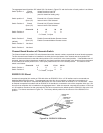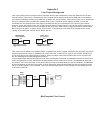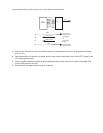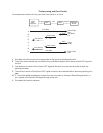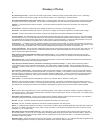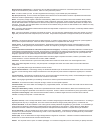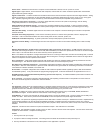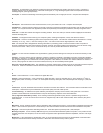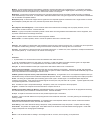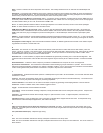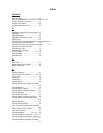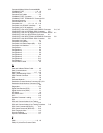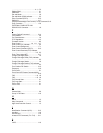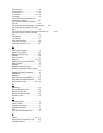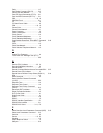Modem: A communications device that enables a computer to transmit information over a telephone line. It converts the computer's
digital signals into analog signals to send over a telephone line and converts them back to digital signals at the receiving end. Modems
can be internal and fit into an expansion slot, or external and connect to a serial port.
Modulation: The process of encoding information from one signal (called the source) into another (called the carrier) by modifying
some characteristic(s) of the carrier. It is often used in telecommunications when one type of signal must be converted for transmission
over an otherwise incompatible medium.
Multiplexer (mux): A device that merges several signals into one composite signal for transmission over a single medium or channel.
A de-multiplexer (usually built into a mux) reverses the process at the receiving end.
N
NAK (Negative Acknowledgment): Communications code used to indicate that a message was not properly received, or that a
terminal does not wish to transmit. Contrast with ACK.
Network: A group of computers connected by cables or other means and using software that enables them to share equipment, such
as printers and disk drives to exchange information.
Node: Any point within a network which has been assigned an address.
Normal mode: In modem operation, refers to a mode of operation without error correction active.
O
Off-hook: The condition of a device which has accessed a phone line (with or without using the line). In modem use, this is equivalent
to a telephone handset being picked up. Dialing and transmission are allowed, but incoming calls are not answered.
On-Hook: The condition of a device which has not accessed a phone line. In modem use, this is equivalent to a telephone handset that
has not been picked up. In other words, it can receive an incoming call.
P
Parameter:
1. A "place holder" in a command which should be substituted with useful information.
2. The list of acceptable values for a given option or command. In UNIX, the generic command should be typed in as Stty/s 9600.
Where "Stty" is the command, "s" is the speed switch, and "9600" where s=1200-115,200 bps.
Parity bit: An extra bit attached to each byte of synchronous data used to detect errors in transmission.
PCB (Printed Circuit Board): A flat board that holds chips and other electronic components. The board is "printed" with electrically
conductive pathways between components. The main PCB in a system is called a motherboard and the smaller PCBs that plug into the
slots in the motherboard are called daughter boards or cards.
PCMCIA (personal computer memory card international association): An organization of U.S. and Japanese companies set up to
standardize memory cards and other architecture-independent expansion devices. These cards are typically used in laptop computers.
Phase: The timing of a signal based upon the starting point of each cycle in another signal. To be detected phase requires the
comparing of two signals. If the cycle of two signals begin at the same point, they are said to be "in-phase". In-phase signals add, while
out-of-phase signals tend to cancel each other.
Port: A location for input or output data exchange. Computers, muxes, etc. have ports for various purposes.
Program: A collection of computer instructions that tell the computer what to do.
PROM (Programmable Read Only Memory): (pronounced "prom") A permanent memory chip that can be programmed or filled by
the customer after by the manufacturer has set initial values. Contrast with ROM.
Prompt: A request for information from the PC that provides required input or information.
Protocol: A set of rules that defines how computing devices communicate with each other. The rules governing the transmitting and
receiving of data.
PSTN (Public Switched Telephone Network): A worldwide public voice telephone network that is used as a telecommunications
medium for the transmission of voice, data and other information.
Pulse dialing: One of two methods of dialing a telephone, usually associated with rotary-dial phones. Compare with tone dialing.
Pulse-width: This pertains to a digital signal. Pulse width refers to the duration of one state between clocking signals. Pulse width
roughly corresponds to an analog signal's wavelength.
Q
Queue: A set of activities that are waiting in chronological order for an action, such as printing, to be performed.
R



